#slate colored junco
Text
Dark-eyed Junco (Junco hyemalis)

"They’re super common where I’m from, but I still love them very much"
"They are so cute and they look like chocolate birds that have been dipped in cream. They are my favorite winter bird."
Junco, a type of sparrow, like to forage on the ground. They often form flocks in the winter with other seed-eating birds, and in areas with more than one subspecies they will flock together. A flock of dark-eyed juncos has been known to be called a blizzard (this lacks a citation on wikipedia, but these group names are often apocryphal as is).
All Dark-eyed Junco (DEJU) sing the same basic trill of a song and make the same flight chips as they take off. They all have white bars at the edge of their tails that flash when they take off and most have a cute little pink bill. Otherwise, their plumage is vastly different depending on where you live! Most junco are migratory, but some populations and subspecies are sedentary.
(Please note: the Yellow-eyed Junco (YEJU) is a different species, but is also shown on this map. Alt ID contains full names of each subspecies for DEJU only)

A bit of off topic explanation, but the 4-letter codes that have been used in this post are a short-hand way to refer to birds in the field. They were created by the Bird Banding Laboratory and then updated by the American Ornithologists' Union. Theyre typically straightforward, but there are a lot of rules and exceptions so sometimes explaining them gets a little complicated. I'll put a link to a better explanation down below in the sources. I may use these for some of the North American birds I talk about, since I'm familiar with those codes, but for ease of reading and clarity I'll try not to.
Source:
Image Source: eBird (Ryan Schain)
Range Map from Birding Wire (below)
#in memoriam (joke)#North American birds#Junco hyemalis#dark-eyed junco#passerellidae#sometimes the codes are rlly fun tho so like they'll definitely be brought up again#oregon junco#slate colored junco#Pink-sided Junco#White-winged Junco#Gray-headed Junco#Red-backed Junco
10 notes
·
View notes
Text
juncos are literally so fun. what if a sparrow was kinda blue and cold hanging out w its friends
#this is not even a what if. its real!#cpost#bird blogging#specifically slate-colored dark-eyed juncos to be clear
1 note
·
View note
Text

A new species complex for @birdgenoscape project, the Dark-Eyed Junco, in Slate-Colored, Oregon, Grey-Headed, Red-Backed, Pink-Sided, and White-Winged forms. Does anyone know why it has diversified into so many morphologically distinct groups?
235 notes
·
View notes
Text
Now that spring is here, we're starting to see some changes in the local bird population. New faces are starting show up, and even the year-round species are out singing and generally being visible. There's territory to claim and potential mates to attract, after all. But while many species are just arriving or passing through, one that's dear to me is just about ready to depart.
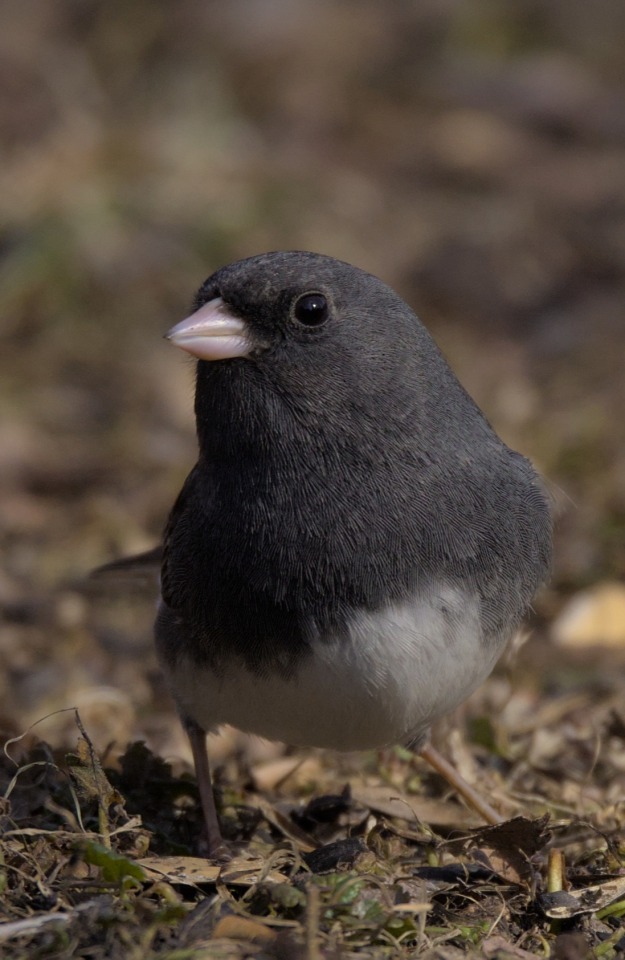
[ID: A male Dark-eyed Junco stands in the newly-revealed grass and dead leaves. Juncos are small birds, about the size of a sparrow. This one is the slate-colored variety, with a dark grey head and upper body, contrasting with bright white underparts. He's facing the camera and looking slightly to the left. His eye is dark brown, nearly black, and his triangular bill is pale pink. End ID]
The Dark-eyed Juncos are strictly winter residents of southern Wisconsin, preferring to nest in Canada, the Northeast US, and parts of Appalachia. This past weekend, I could tell they had migration on their minds.

[ID: Another male Dark-eyed Junco, standing among dead twigs and sunflower seed shells. This one is darker grey in the head and breast, with lighter grey on the wings and a bit of rust color on the back. End ID]
For most of winter it's fairly common to see a solitary Junco or pairs or small groups picking through the snow under the birdfeeders in our backyard. But now they're forming a flock of at least 30 birds, foraging together and singing their loose trilling song. It's as if they know they have a long flight ahead, and every moment of daylight must be spent filling the tank and gathering their compatriots.

[ID: A male Dark-eyed Junco forages in the twigs and leaves for scattered birdseed. Juncos scrape at the ground with both feet simultaneously in a little hop, then inspect the freshly-exposed ground for tasty morsels. This one is mid-scrape, with debris flying around it. End ID]
So I decided to sit on the deck with my camera for a while to bid the Juncos farewell until next winter. I've been scattering seed back there every so often, and the other birds aren't exactly neat or careful when digging through the feeder above. As such, the Juncos have lots to choose from while poking around between the squirrels and the Mourning Doves. Once I sat down, they didn't seem to mind me at all.

[ID: A female Dark-eyed Junco inspects the ground for bits of seed. The females are distinguished from the males by their paler grey upper parts, sometimes with more brown and tan shades mixed with the grey. End ID]
Though, the birds did seem to mind when my kid joined me on the deck, brandishing his bright green snow shovel. They scattered to the trees or the fence and stayed there until I convinced him to put the shovel away in favor of coating the deck boards in a thick layer of sidewalk chalk.
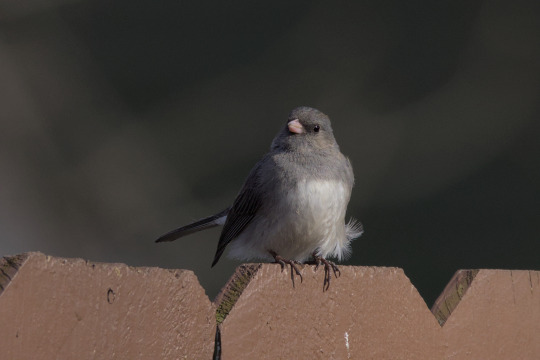
[ID: A female Dark-eyed Junco sits on a wooden fence, waiting patiently for the danger posed by a nearby four-year-old to pass. The wind is catching the white feathers on her left hip and flipping them up like the flounce of a skirt. End ID]
As the sun sank lower in the sky, I figured I better get dinner started. I spent another minute or two listening to the evening birdsong before capping my lens and helping to knock the chalk dust off my kid's coat and pants. This sudden activity caused the Juncos to scatter once again. Have a safe trip little ones. I'll see you when the snow flies.

[ID: A female Dark-eyed Junco stands in the dirt, looking at the camera with head cocked to one side, as though she's wondering what this person finds so interesting about her. End ID]
#bird#birding#birds#photography#bird photography#close encounter#birdblr#birdlife#birdwatching#original photography#original photography on tumblr#dark eyed junco#migration#spring
586 notes
·
View notes
Text

Today's bird is...
This Dark-eyed Junco! (slate-colored subspecies)
137 notes
·
View notes
Text






some bird photos from my feeder from earlier this week!
photos 1, 2, 3, & 4 all have Northern Cardinals (Cardinalis cardinalis), with 1 & 3 being males, and 2 & 4 being female.
On the left side of photo 3 is a House Sparrow (Passer domesticus).
on the left side of photo 4 is a Dark Eyed Junco (Junco hyemalis, slate colored so subspecies J. h. hyemalis). 5 & 6 are also both Dark Eyed Juncos :3
7 notes
·
View notes
Note
What's your favorite bird?
This is such a difficult question, it's like asking me to choose my favorite child! BUT I have compiled a list of 10 birds I consider my favorites:
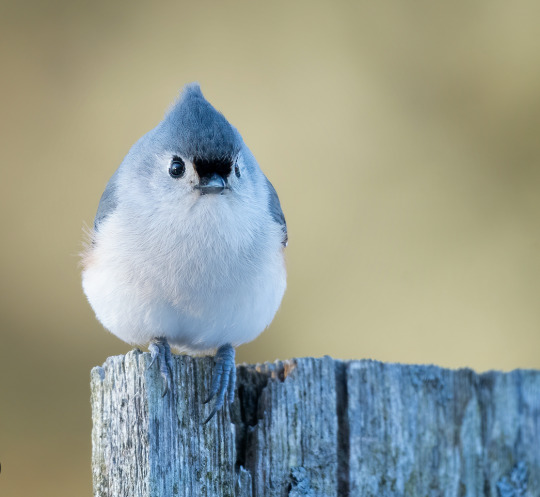
Tufted titmice (pic by Jocelyn Anderson)—my front yard is always filled with these little peanut thieves, and I love them with every fiber of my soul. They're especially funny in the winter when they get all puffed up and round
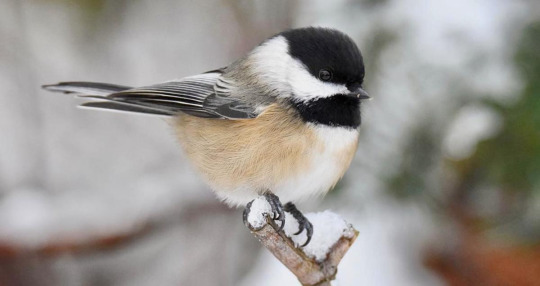
All chickadees—there are 7 types of chickadees, and I've only ever seen black-capped chickadees, but I love them all. They're so brave for such tiny birds
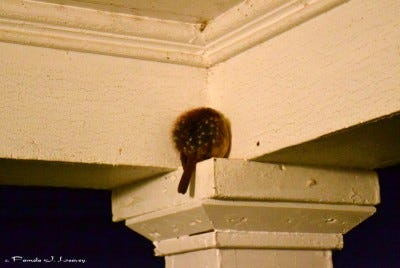
Carolina wrens—they're SO LOUD, and they have this incredible habit of sleeping in corners. People always post them on r/whatsthisbird thinking they're owls, but nope! they're just these little orbs (also, I recommend checking out r/sleepywrens. it just makes me happy)

Dark-eyed juncos—little snowbirds :) I especially love the slate-colored subspecies, but I adore them all. They're also a fascinating example of speciation happening in real time
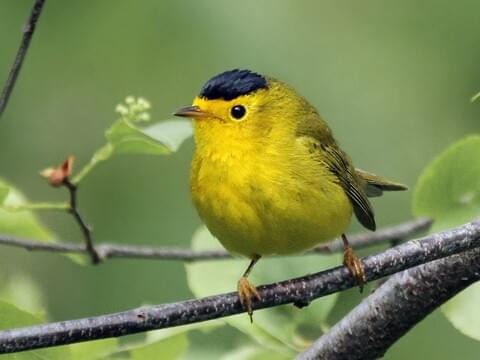
Wilson's warbler—HE HAS A LITTLE HAT. No notes, 10/10
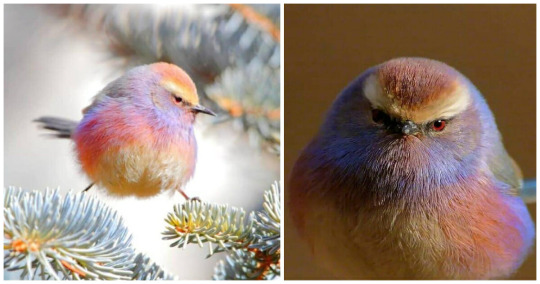
White-browed tit warbler—look at this thing. Cotton candy bird
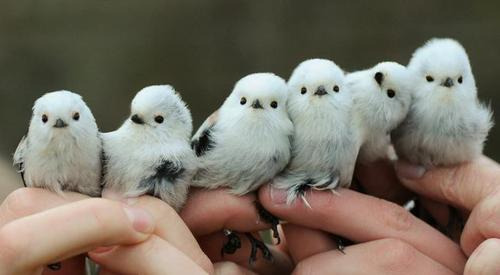
Long-tailed tit—the Hokkikado subspecies is the one that's always shared online, but the other ones also have adorable angry eyebrows
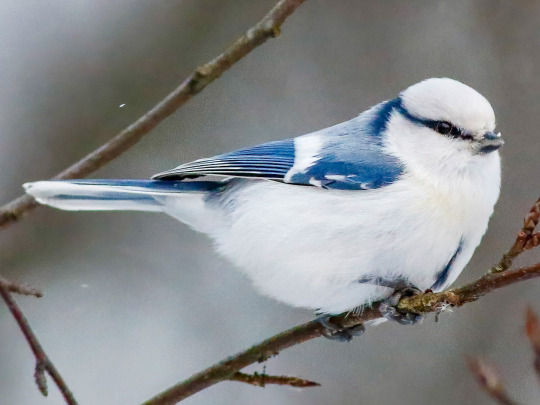
Azure tit—the eBird description for this one is "Frosty, pale bundle of joy," and they are 100% right
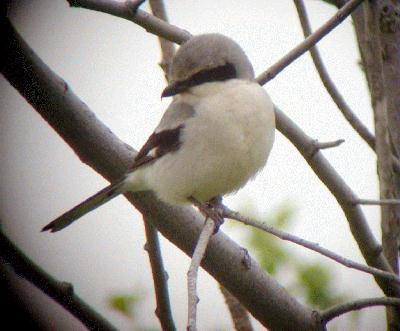
Loggerhead shrikes, aka butcherbirds—I love these because their feeding habits are so incredibly bloody and violent, but they're so unassuming and cute. They're out there impaling their prey on thorns, but they're so small and chubby that you can never quite be mad at them for it
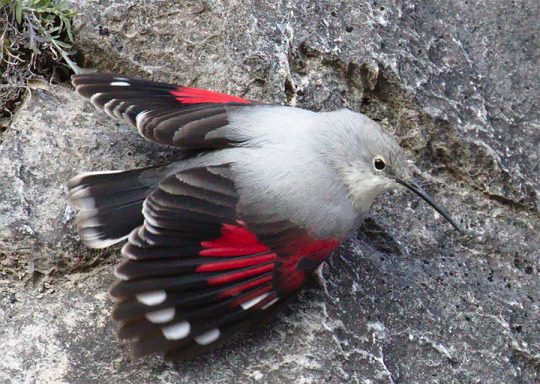
Red-winged wallcreeper: these look like what you'd get if you crossed a butterfly and a bird
#I also love lilac-breasted rollers#and bearded reedlings (so round!)#and I want to see a european robin in person one day#but this post has already gotten out of hand lol#OH ALSO NUTHATCHES (little anti-gravity birds!)#anyway thank you for this ask :)#mothduty
10 notes
·
View notes
Text
Prefix: Junco-
A grey-and-white cat.

Description: dark-eyed juncos are small, ground-dwelling sparrows that live in northern Michigan year round and southern Michigan during the winter only. This species is comprised of several different subspecies that vary greatly in appearance. The subspecies of junco found in Michigan is called the slate-colored junco, and they are dark grey with white bellies, small brown markings, and pink bills. In flight, these birds are easily identified by their white outer tail feathers. During the summer, dark-eyed juncos breed in coniferous and deciduous forests, and they form large, noisy flocks in fields, woodlands, and other open habitats during the winter. They frequently forage for seeds on the ground beneath bird feeders. In regions where dark-eyed juncos are migratory, they are seen as a symbol of winter’s beginning because they often arrive with the first snowfall.
2 notes
·
View notes
Text












Recent bad bird photos
Top row: Left: We get a lot of dark-eyed juncos around here, but usually only the Oregon subspecies. This one belongs to the slate-colored subspecies, as far as I can tell. Right: a yellow-rumped warbler partially obscured by the flowers it was eating from.
Row 2: An oak titmouse entering and exiting a cavity in a utility pole. Maybe making a nest in there?
Row 3: One of the red-shouldered hawks that nests in my neighborhood.
Row 4: Two common goldeneyes on Lake Merritt, one of which I caught in an extremely derpy moment.
Row 5: what would have been an excellent photo of an American coot, if it hadn't turned its head away just when I took the photo.
Row 6: two shots of an eared grebe (facing away in the second photo, but I loved this view of its fuzzy head).
Row 7: a very blurry attempt at a snowy egret version of It Fucken Wimdy.
Row 8: blurry photo of what I assume was a house finch; excellent photo of a spotted towhee's butt.
3 notes
·
View notes
Text

Winter birds - American Tree Sparrow (Spizelloides arborea) in foreground, Slate-colored Dark-eyed Junco (Junco hyemalis hyemalis) behind
2/23/23
5 notes
·
View notes
Text
North American Grumpy Bird

I just think that this dark-eyed junco looks like it got up on the wrong side of the bed. 😂
"The Dark-eyed Junco was classified as five separate species until the 1970s, when the American Ornithologists' Union (AOU) combined them, based on the most current scientific data. The AOU then subdivided the newly created species into separate groups, each with its previous common and scientific names: Slate-colored Junco (hyemalis); White-winged Junco (aikeni); Oregon Junco (oreganus); Gray-headed Junco (caniceps); and Guadalupe Junco (insularis)." - abcbirds.org
#photography#photographer#photographylovers#birds#birdwatching#birds of north america#birdsphotography#birdlovers#birdphotography#birds nature#birdingphotography#backyard birds#bird#bird photography#bird watching#birding#dark eyed junco
10 notes
·
View notes
Note
are hybrid species allowed? (tricolored heron x snowy egret, for example)
Hmmmmmmmmm
This one took a minute for me to decide, because I love hybridization, but I will have to say no. I think one day I'll run a hybrid-birds poll, perhaps?
I will use this question to clarify that named subspecies are allowed, but if both a subspecies and its parent species are entered, it still counts as a duplicate.
#asks#not polls#the subspecies thing is why dark-eyed Junco got kicked#someone submitted Slate-Colored Junco and I had to really deliberate before I decided its still the same species#I really went back and forth on this in my head tho bc I looooove hybrid birds!!#there is one example that has made it through the filter but its bc the hybridization resulted in a single species instead#or so my research tells me. we will be double checking before final contestants are picked
7 notes
·
View notes
Text
JUNE 7, 2024
Something for Everyone
Deborah Ormay (Pennsylvania, USA)
"While physical training has some value, training in holy living is useful for everything. It has promise for this life now and the life to come." - 1 Timothy 4:8 (CEB)
"I enjoy watching the birds outside my home-office window. From this vantage point, I have learned about the feeding styles and food preferences of various birds. Slate-colored juncos hop backward on the garden floor to reveal food. Mourning doves poke around on the ground to find millet seeds that have fallen from the feeders. Downy woodpeckers take a seed from the feeder and hammer it against a tree branch to crack it open. Goldfinches can’t get enough thistle seeds. Nuthatches peck away at suet. Black-capped chickadees like everything!
Watching the birds reminds me of the many spiritual disciplines we use to stay close to God and grow in faith. Fasting, prayer, daily Bible reading, meditation, walking a labyrinth, worship, and Bible study are some ways we can feed our faith. Personally, I keep a prayer journal and use The Upper Room as part of my daily spiritual practice.
Anytime is a perfect time to try a new spiritual practice. Whether it’s walking a labyrinth for the first time or joining a Bible study, whatever we learn from these new practices will stay with us and serve us in the future." Spiritual growth comes from prayer, Bible study, meditation and discussions with other Christians. You feed yourself with the information you need to push ahead through life.
TODAY'S PRAYER
"Gracious God, thank you for the many ways we can learn about you and grow in our faith. Bless us and keep us close to you." Amen.
1 Timothy 4:6-16
"'6 If you point these things out to the believers, you will be a good servant of Christ Jesus who has been trained by the words of faith and the good teaching that you’ve carefully followed. 7 But stay away from the godless myths that are passed down from the older women. Train yourself for a holy life! 8 While physical training has some value, training in holy living is useful for everything. It has promise for this life now and the life to come. 9 This saying is reliable and deserves complete acceptance. 10 We work and struggle for this: “Our hope is set on the living God, who is the savior of all people, especially those who believe.” 11 Command these things. Teach them. 12 Don’t let anyone look down on you because you are young. Instead, set an example for the believers through your speech, behavior, love, faith, and by being sexually pure. 13 Until I arrive, pay attention to public reading, preaching, and teaching. 14 Don’t neglect the spiritual gift in you that was given through prophecy when the elders laid hands on you. 15 Practice these things, and live by them so that your progress will be visible to all. 16 Focus on working on your own development and on what you teach. If you do this, you will save yourself and those who hear you." Being fully aware of spiritual activity around you every day will help you stay grounded in faith. Practice things from scripture, explore an idea from a pastor/religious leader, and just remain aware of the things that can make a spiritual difference. We can always learn. Bless you! Joe
0 notes
Text
Any Western Oregon birders on here? I need song identification help. I got a sound recording on the Merlin app and it recognized a Chipping Sparrow (which is rare for Western Oregon) and a Dark-eyed Junco, the Slate-colored one specifically, which I don't think we have here (Google's not much help). Their songs I'm hearing sound practically the exact same and it's driving me nuts and I think it confused the app too.
#birds#birding#birdwatching#western oregon birds#oregon birds#oregon#merlin app#bird songs#bird identification#nature
0 notes
Text
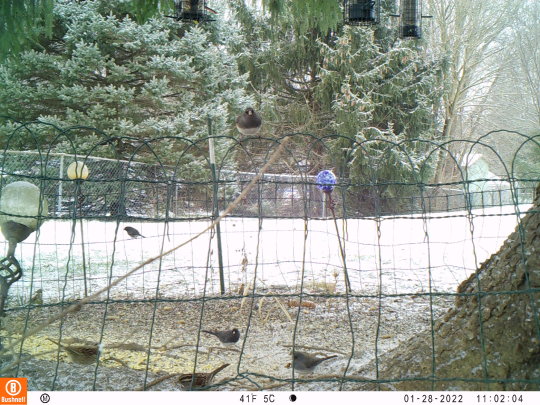
Dark eyed junco on the little fence.

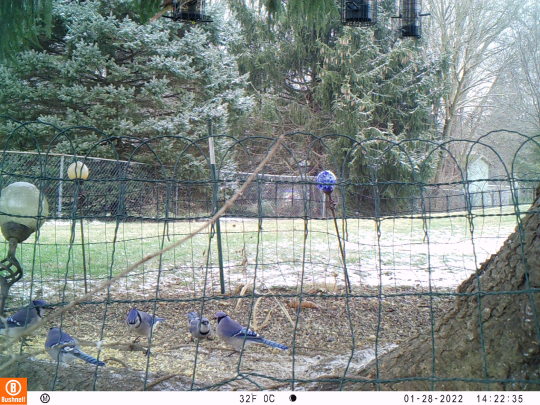
Five Blue jays!
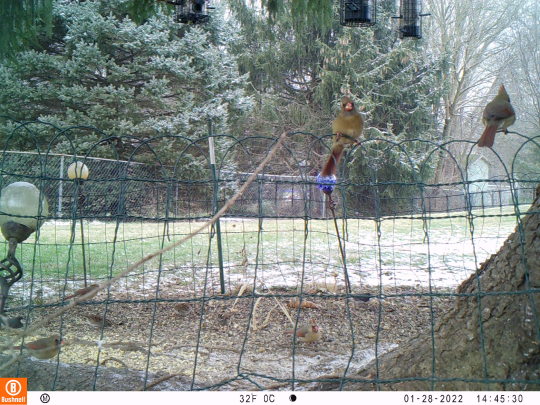
I think there's five female Cardinals.
#Backyard visitors#game camera#female Cardinals#Dark eyed Junco#slate colored junco#snowbird#Blue jays#Pennsylvania#southeastern PA#southern York County PA#28January2022
0 notes